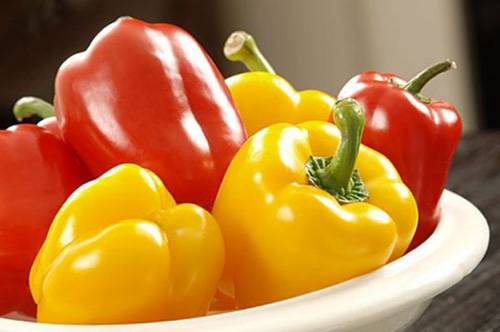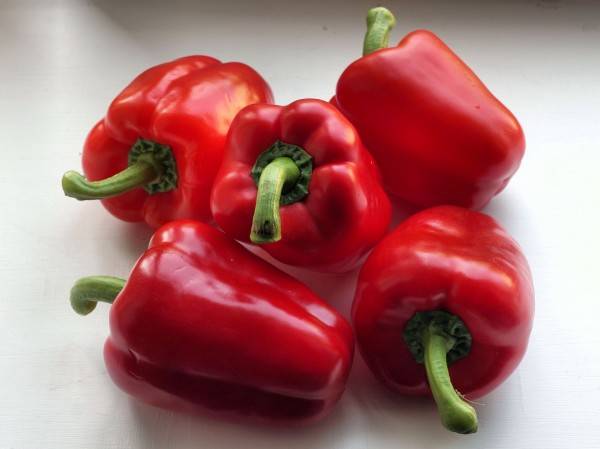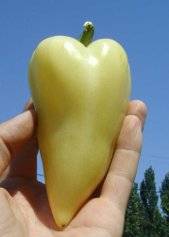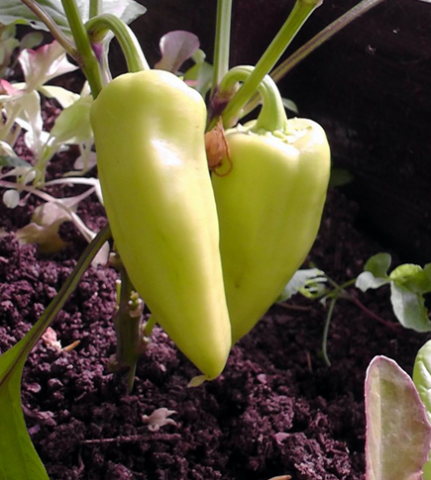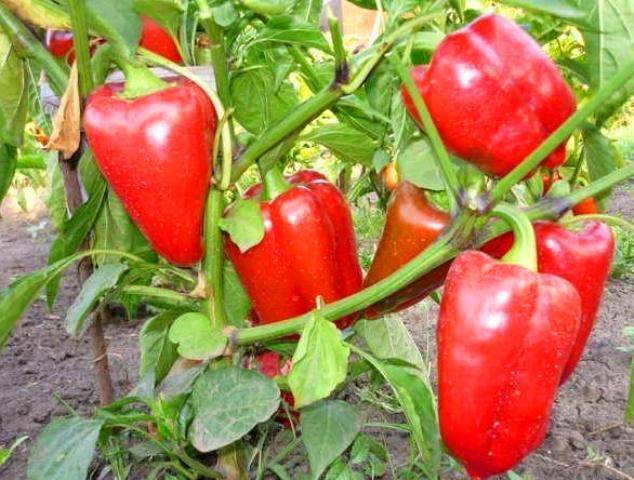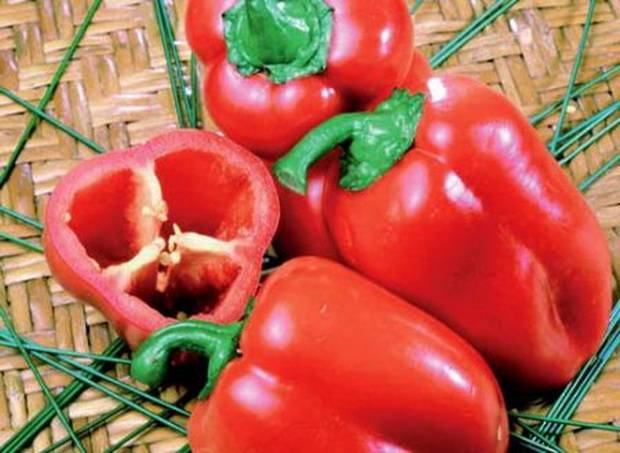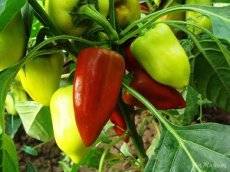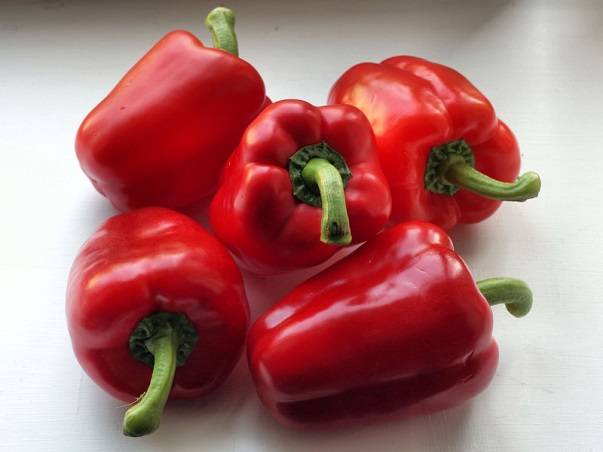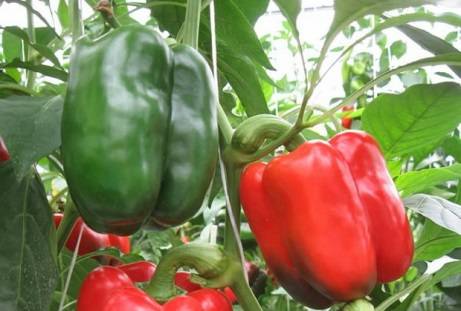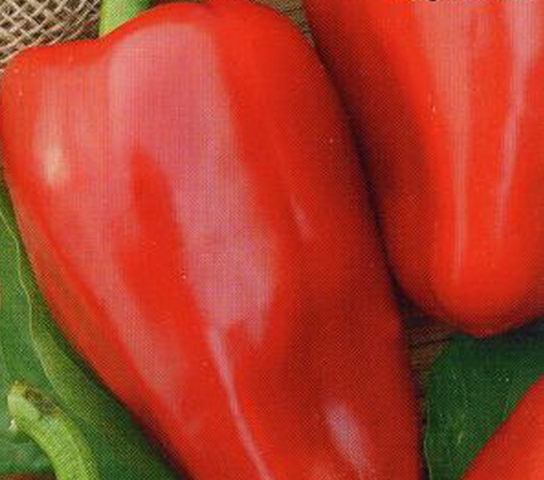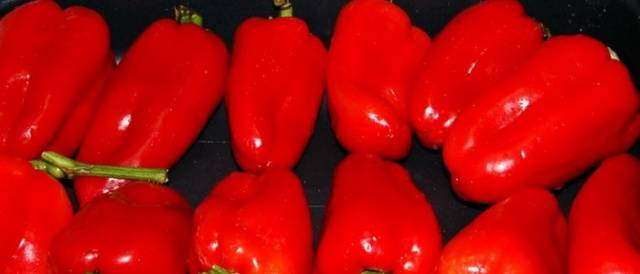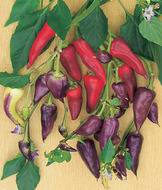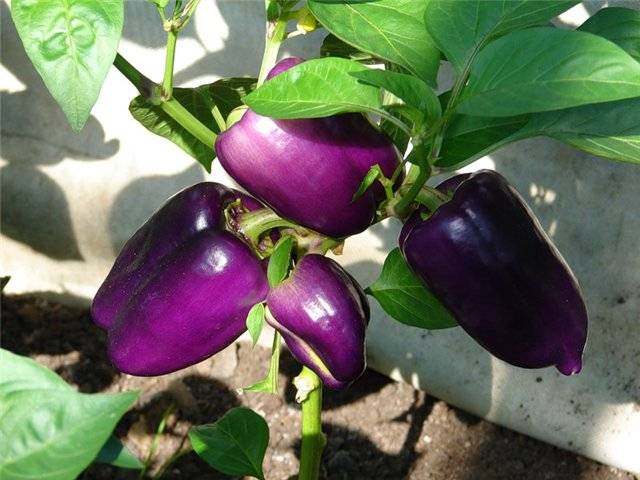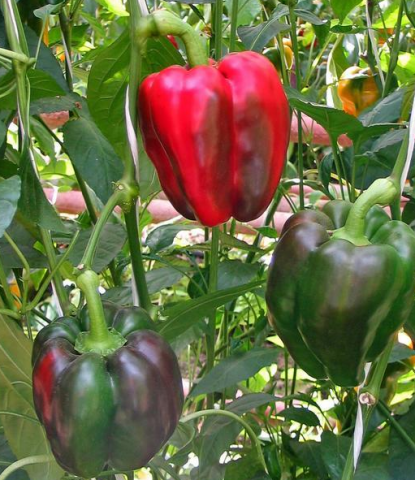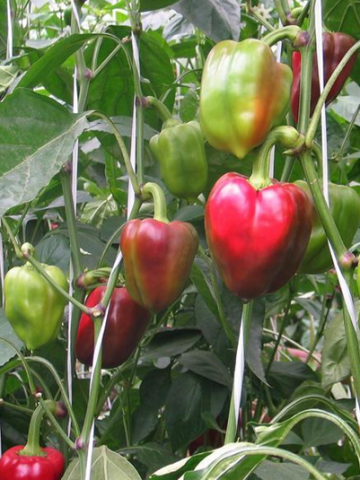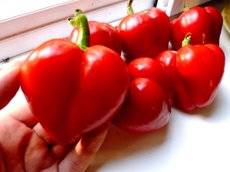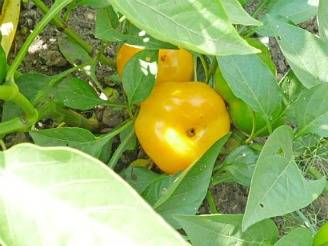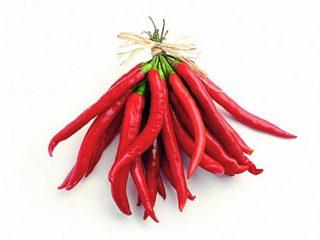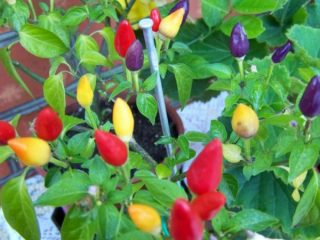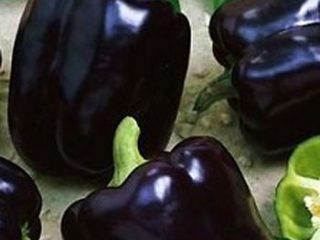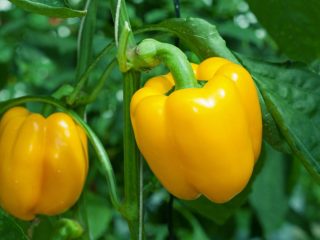Content
Previously, it was generally accepted among gardeners that it was almost impossible to grow tasty, mature bell peppers in the open ground in domestic climatic latitudes. They say that this requires certain temperature conditions, which in the summer do not always pamper us. However, thanks to the work of breeders, this opinion is currently erroneous. There are a lot of new bell pepper varieties for open ground, adapted to modest summer temperatures.
5 most popular varieties
Modern selection includes more than 800 types of sweet pepper, which can be successfully grown in the middle climate zone. Of these, almost half are intended for cultivation in open ground. At the same time, among the total mass of varieties, there are sales leaders that are especially popular among farmers and gardeners. They gained their fame due to their high yield, excellent taste, ease of care and other advantages. By analyzing the varieties proposed by manufacturers, you can create a kind of rating: the 5 most popular varieties of pepper for open ground.
Gift from Moldova
Perhaps the most popular variety of pepper. It attracts gardeners with the appearance of the vegetable, its adaptability to any climatic conditions and soils, and its ability to bear fruit abundantly.
The bush of the plant is relatively low - up to 50 cm. Its fruits are rich red in color and have a cone shape. The plant has a mid-early ripening period and bears its first ripe fruits 130 days after the seed is sown. The length of the pepper does not exceed 10 cm, its average weight is 110 g. The pulp is sweet, juicy, quite thick (5 mm), the skin is thin. The yield of the variety is approximately 5 kg/m2.
Ivanhoe
Sweet pepper for open ground. The color of the vegetable can be creamy white or red. In addition to excellent taste, the advantage of the variety is the early period of fruit ripening - 115 days.
The cone-shaped fruit weighs on average 100-120 g. The internal cavity of the pepper has 2-3 partitions.
Plant height up to 70 cm. High yield up to 7 kg/m2 and resistance to cold and some diseases.
Lumina (Belozerka)
It is recommended to sow pepper seeds of this variety for seedlings in March. Taking into account the period of fruit ripening (120 days), the harvest in this case can be obtained from July to August.
The plant is quite low - up to 50 cm, however, it bears fruit abundantly. Its yield is approximately 8 kg/m2. The culture is not picky about soil and growth conditions.
The pepper has a cone shape with 2-3 edges. The thickness of its wall is 5 cm. The pulp of the vegetable is nutritious, juicy, and sweet. The skin is cream colored. The average weight of bell pepper is 120 g.
Bogatyr
The pepper variety of Moldavian selection is recognized as one of the best. Its fruits are green and red in color.
There are 2-4 chambers inside. The weight of one sweet pepper is approximately 160-170 g. Peppers ripen 120 days after sowing the seed.
The bush is up to 60 cm high, produces a yield of 7 kg/m2. A feature of the variety is the possibility of a long storage period for the vegetable - up to 2 months.
Winnie the Pooh
A representative of a low-growing variety of early ripening (105 days). The height of the bush does not exceed 30 cm, the yield is 5 kg/m2. Fruit weight is 50-70 g. The pepper is red in color, the flesh is juicy, and the shape is conical. The culture was bred by Moldavian breeders. The advantage of the culture is resistance to diseases.
Given pepper varieties are considered the best in relation to other analogues. Their taste is excellent and their yield is excellent. They are perfect for outdoor areas, even in relatively harsh climatic conditions. Suitable for the climate of Siberia.
Varieties for harsh climates
Russia is so large that its territory covers several climatic latitudes. Of course, conditions for farmers in the north and south of the country differ significantly. That is why breeders have developed a number of unpretentious varieties specifically for the conditions of Siberia. For the ripening of such bell peppers, a long photoperiod and high summer temperatures with high humidity are not required. The varieties given below are unpretentious to the composition of the soil, grow successfully in open ground and can delight even novice gardeners in Siberian conditions with a good harvest.
Firstborn of Siberia
The variety is early ripening, resistant to a number of diseases. From the day the seed is sown until the first harvest is obtained, just over 115 days pass.To obtain a harvest in early summer, bell pepper seeds can be sown as seedlings in February-March. Seedlings at the age of 55 days need to be planted. Low-growing variety, plant height does not exceed 45 cm. However, the yield of the variety is amazing - up to 12 kg/m2. Due to the high yield of fruits, it is considered one of the best.
The amazing taste of sweet peppers for open ground also deserves attention. The thickness of its wall is large - up to 10 mm. The pulp itself is very juicy and tender. The shape of the fruit is pyramidal, its length is up to 9 cm, its weight is about 70 g. Bell pepper of this variety has a light yellow or red color.
Novosibirsk
This variety of bell pepper is presented tall plant up to 1 meter. Single peppers of bright red color are abundantly formed on it. The crop yield is low - up to 4 kg/m2. The first vegetables ripen within 100 days after sowing the seed. For cultivation, it is recommended to use the seedling method. The culture was bred by Siberian breeders.
Sweet pepper, weighing up to 60 g. Fruit wall thickness 6 mm.
Siberian
Large sweet peppers This variety weighs up to 150 g. They resemble a cube in shape. They have excellent taste. The pulp is sweet, juicy, thick. The skin is thin. The vegetable is suitable for preparing culinary dishes and winter preparations.
The plant is up to 60 cm high. It produces its first fruits 115 days after sowing the seeds for seedlings. Productivity reaches 7 kg/m2, while unfavorable weather conditions have a slight effect on the number of fruits obtained.
These low-growing varieties are perfect for open ground. However, in relatively unfavorable conditions, the beds should be covered with polyethylene in order to create a better microclimate for the plant.
High-yielding varieties
When choosing a variety of bell pepper, you involuntarily pay attention to the yield. You don’t want to occupy large areas of land to produce a couple of kilograms of vegetables. Especially when it comes to farming, when the sale of crops is considered the main means of generating income. Thus, the highest-yielding varieties of bell pepper are:
Kapitoshka
Kapitoshka peppers are large, with thick walls (7.5 mm). They ripen within 100 days from the day of sowing. Their color is green or red. The shape of the fruit is cone-shaped. The average weight of one vegetable is 80 g.
The plant is low - up to 55 cm, semi-spreading. Needs regular feeding, watering, loosening. With proper care, it bears fruit at a rate of up to 22 kg/m2.
Suite
High-yielding variety of bell pepper. From one compact bush up to 55 cm high, you can collect more than 5 kg of vegetables. The color of the fruit is green or bright red. Their length is approximately 10-13 cm, weight 50-60 g. The pulp is thick (7-8 mm), juicy, aromatic. The fruits ripen 120 days after sowing the seed. The best time for sowing seedlings is March. At 1 m2 In open ground, it is recommended to plant 4-5 bushes. This allows you to get up to 25 kg of peppers from 1 m2.
Forward
The variety is represented by a tall plant. It should be planted in open ground with a frequency of no more than 3 bushes per 1 m2. Be sure to provide a bush garter. The variety is disease resistant. Its fruits ripen on average in 125 days. For seedlings, seeds are sown in March. With this schedule, harvesting occurs in June.
Ripe peppers are green or bright red in color. Their length is up to 15 cm, weight reaches 500 g. With such parameters of the fruit, the variety is deservedly considered a record holder. The crop yield is also high - 18 kg/m2. The taste of the vegetable is excellent.
Peppers with unique colors
The uniqueness of pepper is that fruits of different colors can grow on one bush. This makes the crop a decoration for the garden. Among the bright red, green and orange peppers, there are varieties that have unique, interesting pepper colors.
Watercolor
Indeed, it is as if peppers of this variety are painted with paints. Their color is a mixture of red and lilac. You can see such a unique creation of nature in the photo below.
This variety is ultra-early, its fruits are ready for consumption within 60-70 days from the day of sowing. The shape of the fruit is cone-shaped, up to 15 cm long. The weight of the vegetable is 30 g, the pulp is juicy and aromatic. Crop yield up to 12 kg/m2.
The plant is quite tall - up to 80 cm, and requires staking, fertilizing, and loosening. A crop of 3 bushes per 1 m is planted2 soil.
Amethyst
One of the best varieties for open ground. Belongs to the category of cold-resistant, high-yielding. Peppers have a distinctive purple color and the cuboid shape of the fruit.
The pulp has an amazing aroma, it is very juicy and tender. The weight of one sweet pepper reaches 160 g. The period from sowing the seed to the ripening of the fruit is only 110 days. The plant is represented by a compact bush, up to 70 cm high. Productivity is high - up to 12 kg/m2.
Juicy, aromatic peppers of this variety are colored in a mixture green and red. Their shape is cuboidal, with a rib up to 15 cm long. The weight of one fruit is significant - about 500 g. The pepper pulp is aromatic, especially juicy, and sweet.
The plant is vigorous and needs staking. Bushes should be planted in open ground no thicker than 3 pcs/m2. The seedling method is predominantly used for cultivation, with seeds sown in March and harvested in June. The plant forms excellent ovaries and bears fruit at a rate of up to 18 kg/m2.
Cupid
The variety is distinguished not only by its pleasant taste and aroma, but also by its amazing shape and color. The short period of fruit ripening allows you to enjoy the vegetable within 110 days from the moment the seed is sown. The plant is tall, but not too spreading, so it can be planted at a density of 4 pcs/m2. To obtain an early harvest, it is recommended to sow seeds in February-March for seedlings.
Heart-shaped peppers are green-red in color. Their average weight is 300 g. The total yield of the variety is 10 kg/m2.
Peppers have an even more interesting shape. "The Heart of the Beloved". Their image can be seen in the photo below.
Line 58
These yellow peppers are more shaped like tomatoes: round, 7-8 cm in diameter. The flesh is thick, fleshy, and tender. The color of the pepper is light green or golden yellow. The fruits ripen for a fairly long period of time after sowing - 150 days. The variety was developed in Moldova and is resistant to cold.
The bush is medium-sized, low - up to 55 cm. Its leaves are round, dark green. Crop yield 6 kg/m2.
Similar in agrotechnical characteristics and appearance to the variety “Line 58” is "Kolobok"having a bright red color and variety "Sun" with orange fruits. You can see a picture of these peppers below.
Conclusion
The choice of pepper variety depends on many criteria. First of all, these are the existing climatic conditions, which the gardener cannot change.The second fundamental criterion is taste preferences, because peppers differ not only in shape and color, but also in taste and aroma. The yield of the cultivated variety is also of no small importance. Finding all these qualities in one variety is quite difficult, but taking into account the reviews and experience of experienced gardeners, you can successfully begin your personal history of growing peppers.
